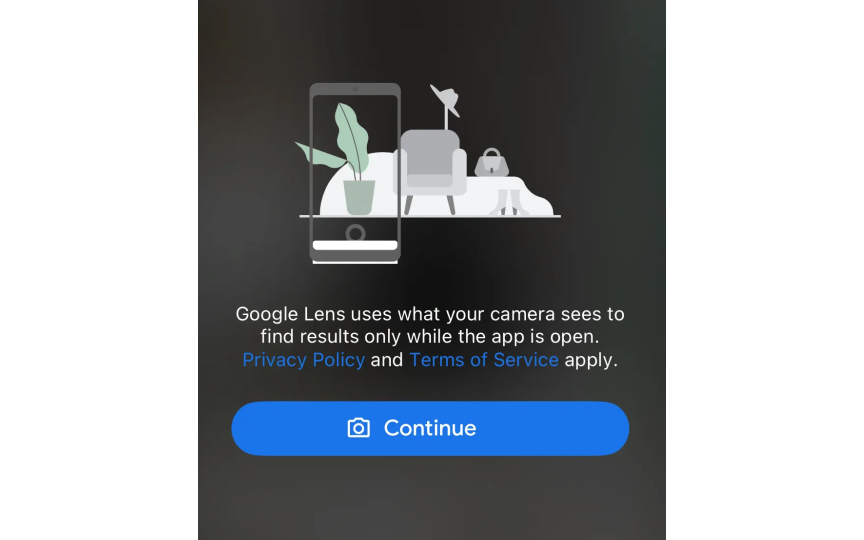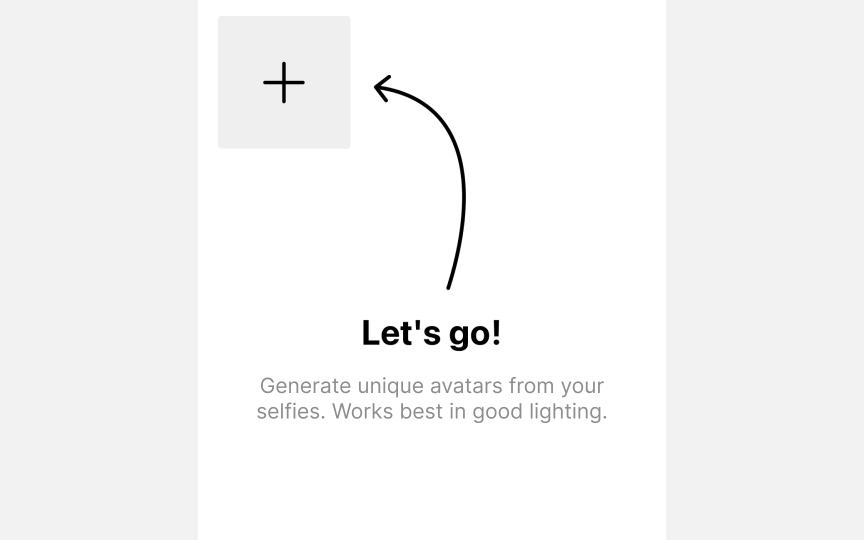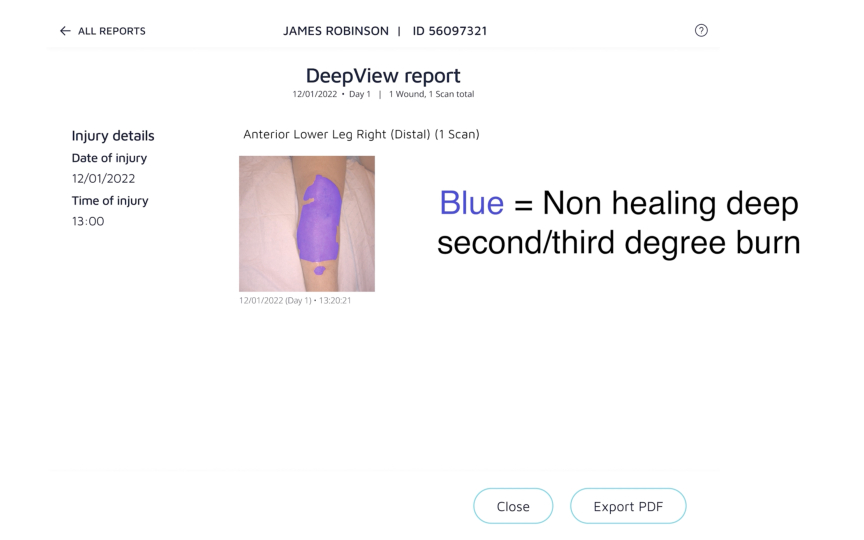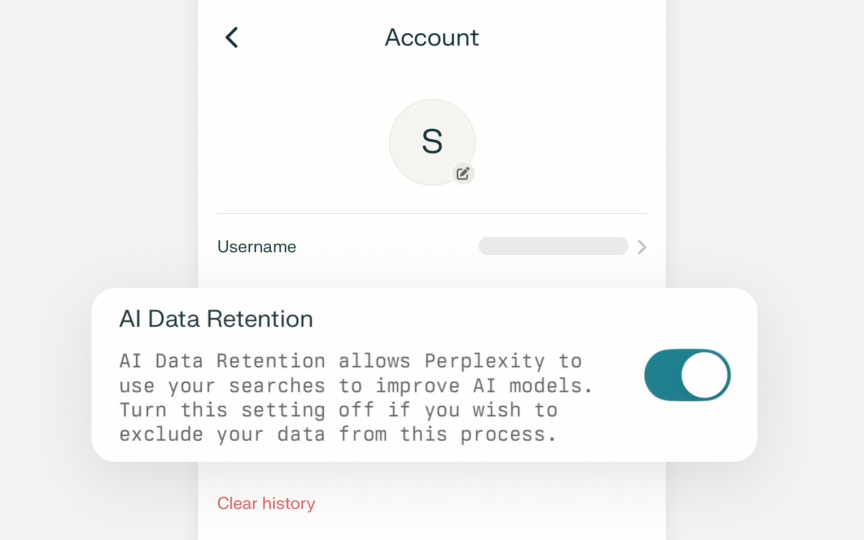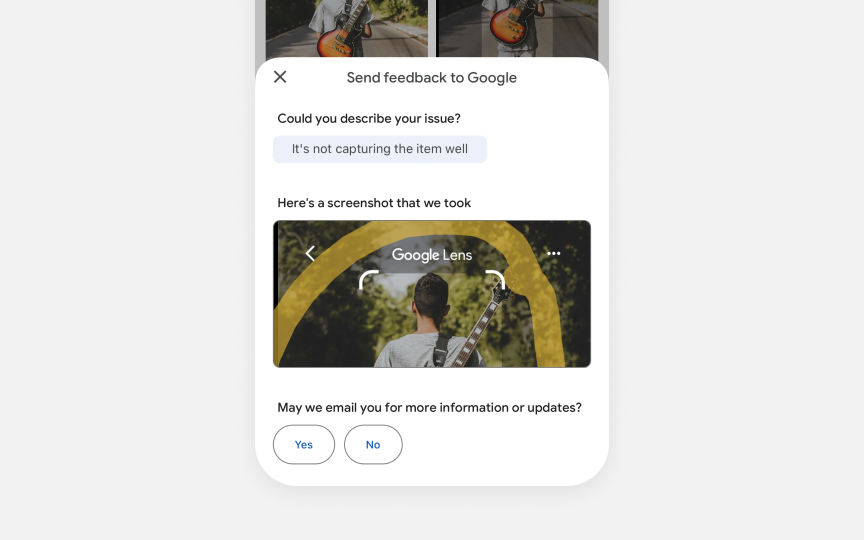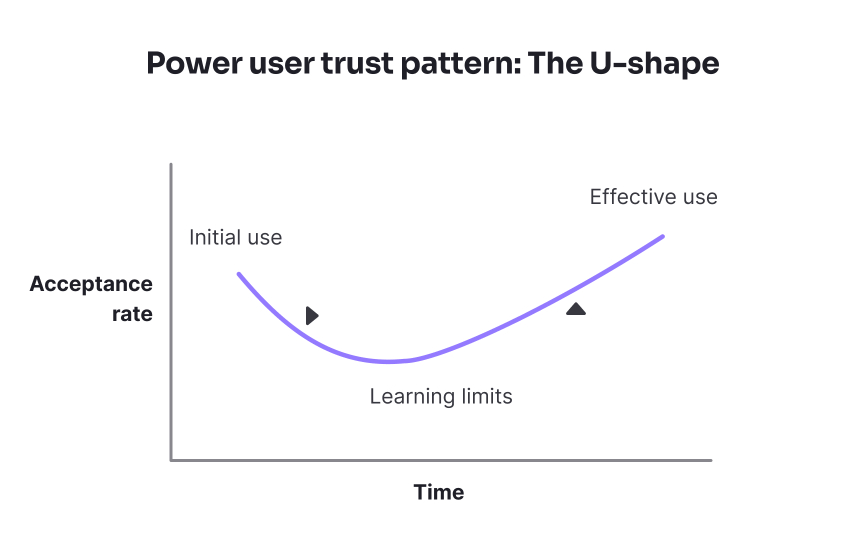Trust Through Transparency
Master transparency techniques that help users develop appropriate trust in AI systems.
Trust in AI is earned, not given. Users need to know when to rely on AI recommendations and when to apply their own judgment. This calibrated trust develops through transparency, showing users how AI makes decisions, what data it uses, and where its limits lie. Transparency isn't about overwhelming users with technical details. It's about providing the right information at the right time. A medical diagnosis AI requires detailed explanations about its reasoning, while a music recommendation system might only need to hint at why certain songs appear. Context determines depth.
Effective transparency reveals data sources without creating privacy concerns, displays confidence levels without confusing users, and acknowledges limitations without undermining the system's value. When AI makes errors, honest communication about what went wrong and how to move forward preserves trust better than hiding failures. Building transparency into AI products means thinking beyond individual interactions. Trust evolves from first impressions through daily use, requiring different approaches at each stage. The goal is to help users develop an accurate mental model of AI capabilities, creating partnerships where humans and AI work together effectively.
Trust in
Consider IBM's Watson for Oncology, an AI designed to help doctors treat cancer. Despite analyzing data from 14,000 patients worldwide, major hospitals dropped the program. The failure shows what happens when AI misses any of the 3 trust factors.[1]
- Ability means the AI can do its job well. Watson could analyze complex cancer cases and suggest treatments. But ability alone doesn't create trust.
- Reliability means the AI works consistently. Watson failed here. Danish doctors found they disagreed with its suggestions 2 out of 3 times. When AI gives unpredictable results, users stop trusting it.
- Benevolence means users believe the AI helps them. Watson couldn't explain why it suggested certain treatments. Its algorithms were too complex for doctors to understand. Without clear reasons, doctors couldn't trust it cared about their patients.
These factors depend on each other. Watson's medical knowledge meant nothing without consistent performance. Its analysis failed when doctors couldn't see how it helped patients.
Pro Tip: When introducing AI features, explicitly address all 3 trust factors in your messaging.
Being transparent about
Clear communication starts before users interact with your product. Marketing messages and onboarding shape expectations. Avoid promising "AI magic" that disappoints. Instead, be upfront about strengths and limitations.
A plant identification app should explain it recognizes 400+ plant types and determines safety for humans and pets. It should also clarify it may struggle with plants from other regions or poor lighting. This honesty helps users know when to trust the app and when to seek additional verification. Transparency about data sources proves especially important. When users understand what information AI uses, they can judge when they have critical knowledge the system lacks. A navigation app explaining it uses hourly traffic data helps users decide whether to trust arrival times for catching flights.[2]
Pro Tip: Frame limitations as helpful guidance. "Works best in good lighting" sounds better than "May fail in darkness.”
First impressions shape how users approach
Marketing messages often promise too much.
IBM promised Watson for Oncology program would deliver "top-quality recommendations" for cancer treatment. These big claims about AI excellence disappointed doctors when the system either confirmed what they already knew or suggested treatments it couldn't explain.
Initial
Building on existing trust helps. Watson missed the chance to connect with established medical practices or respected oncology research. Medical apps that reference trusted health organizations transfer that credibility to their AI. Watson stood alone, asking doctors to trust it without any familiar foundation.
Pro Tip: Make your product easy to try with reversible actions that let users experiment safely.
The stakes of a situation determine how much transparency users need. High-risk scenarios require detailed explanations, while routine tasks function with minimal disclosure.
Consider
Context errors occur when AI makes incorrect assumptions about user needs. A recipe app suggesting dinner recipes at breakfast has made a context error. Being transparent about the signals AI uses helps users understand and correct these misunderstandings. Risk assessment extends beyond individual users. Financial AI affects wealth, educational AI impacts learning, and hiring AI influences careers. Each domain requires transparency approaches matching potential consequences. Low-risk situations allow lighter explanations that don't interrupt user flow.
Trust needs constant care as users spend more time with
New users want control and clear benefits. Make privacy settings easy to find and change. When asking for new permissions, explain why they help. If a fitness app wants to track sleep, it should say exactly how this improves recovery suggestions. Users need to see immediate value from sharing more data.
Start with manual controls before adding automation. Show users each step the AI takes. Once they regularly accept AI suggestions, offer to automate those actions. An email app might first show draft responses to review. Later, it can offer to send routine replies automatically. Build automation slowly through small wins.
User needs change over time. Someone who moves cities or starts new hobbies needs different AI help. Remind users about their settings when big changes happen. A running app trained on city routes should explain its limits when users visit rural areas. Good transparency adapts to changing contexts.
Pro Tip: Increase automation only after users consistently accept AI suggestions in manual mode.
When
Be specific about what went wrong. Generic apologies frustrate users who took time to report problems. If your recommendation system suggested bad content, say exactly why it happened. Maybe it misread user patterns or lacked enough data. Users respect honesty about real limitations more than vague excuses. Follow up with people who reported problems. Show them their feedback made a difference. When a translation app adds new dialects after complaints, tell those users first. Send messages showing the exact improvements they requested. This turns angry users into partners who help make the AI better.
Trust is hard to measure directly, but user actions reveal it. Teams need clear ways to track if users trust
Short-term metrics show quick reactions. Track new user responses after
Different groups need different tracking. Doctor trust metrics differ from patient metrics for medical AI. Mix methods: A/B tests for features, surveys for feelings, analytics for actions. Stable trust levels can be good after big changes. They show users found their comfort zone. Just check it's healthy stability, not worrying stagnation. Trust measurement should grow smarter as you learn your users better.
References
- People don’t trust AI – here’s how we can change that | The Conversation
